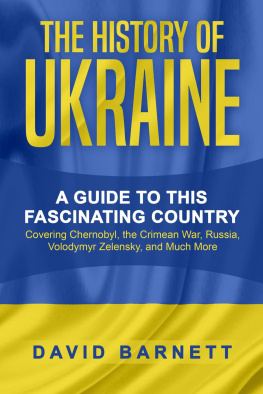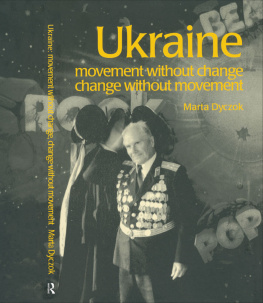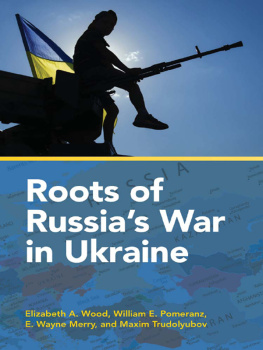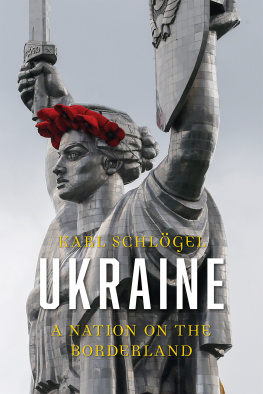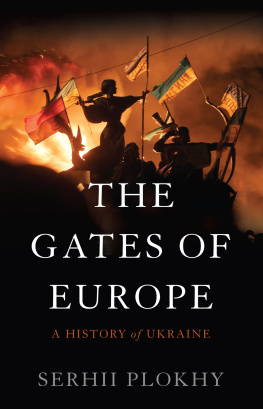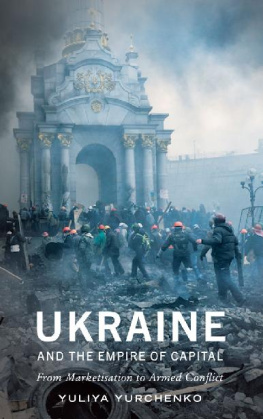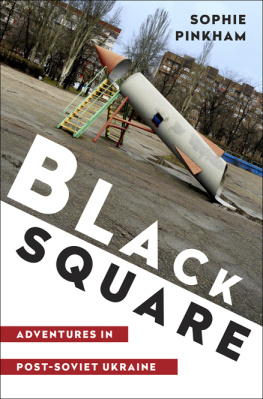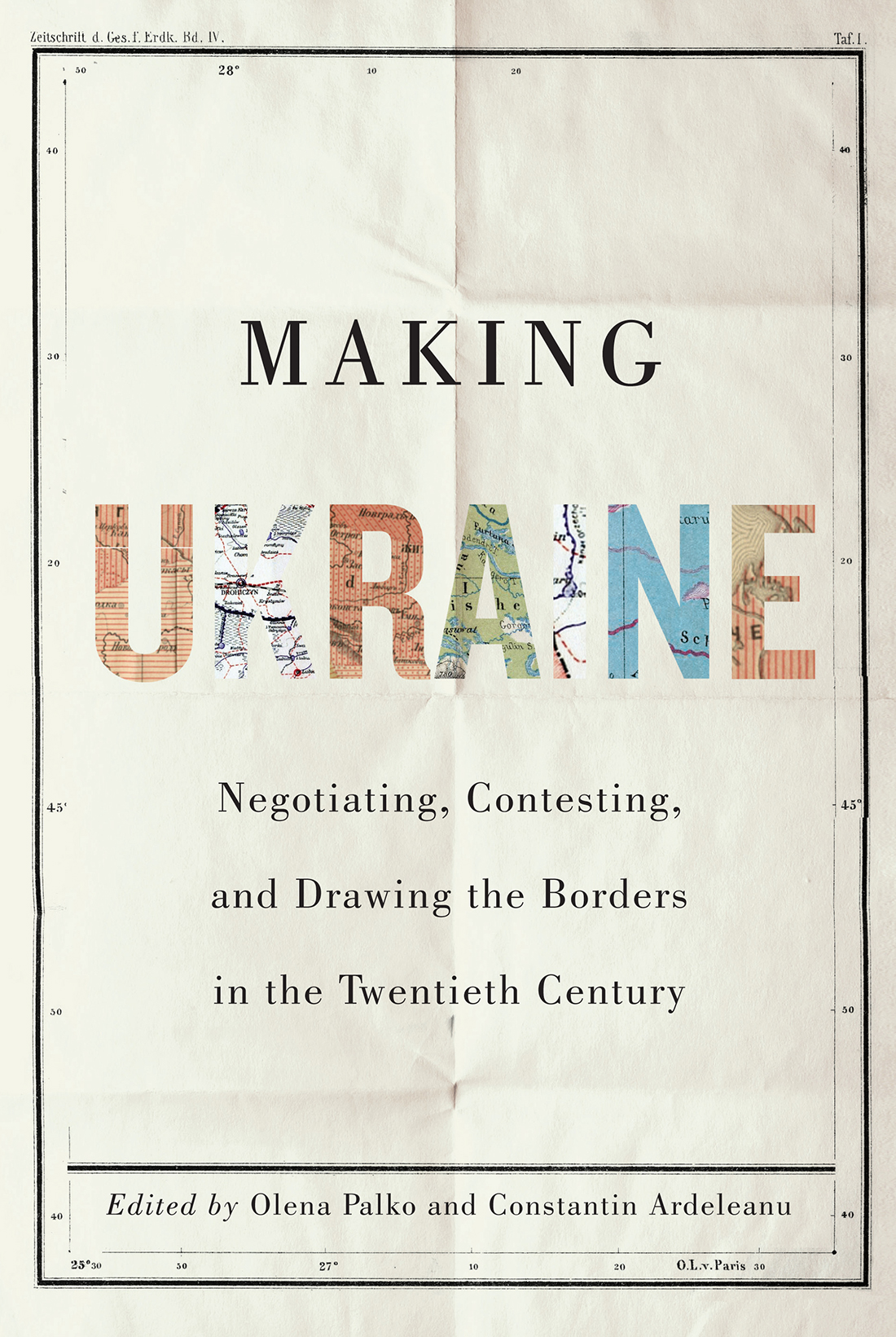MAKING UKRAINE
Making Ukraine
Negotiating, Contesting, and Drawing
the Borders in the Twentieth Century
Edited by
OLENA PALKO and
CONSTANTIN ARDELEANU
McGill-Queens University Press
Montreal & Kingston London Chicago
McGill-Queens University Press 2022
ISBN 978-0-2280-1101-9 (cloth)
ISBN 978-0-2280-1333-4 (e PDF )
ISBN 978-0-2280-1334-1 (e PUB )
Legal deposit second quarter 2022
Bibliothque nationale du Qubec
Printed in Canada on acid-free paper that is 100% ancient forest free
(100% post-consumer recycled), processed chlorine free

McGill-Queens University Press gratefully acknowledges the financial contributions of the Ukrainian Canadian Civil Liberties Foundation (UCCLF) and the Canadian Foundation for Ukrainian Studies toward the publication of this volume.
Library and Archives Canada Cataloguing in Publication
Title: Making Ukraine: negotiating, contesting, and drawing the borders in the twentieth century / edited by Olena Palko and Constantin Ardeleanu.
Names: Palko, Olena, editor. | Ardeleanu, Constantin, editor.
Description: Includes bibliographical references and index.
Identifiers: Canadiana (print) 20210394781 | Canadiana (ebook)
20210394811 | ISBN 9780228011019 (cloth) | ISBN 9780228013334 (e PDF) |
ISBN 9780228013341 (e PUB )
Subjects: LCSH : UkraineBoundariesHistory20th century. | LCSH : UkraineHistorical geography.
Classification: LCC DK 508.157 . M 36 2022 | DDC 947.708/4dc23
This book was typeset by Marquis Interscript.
Contents
Maps
0.1 Ukrainian lands as part of the Russian Empire, 1914.
Prepared by Dmytro Vortman. 6
0.2 South Russian dialects and vernaculars. Prepared by Pavlo Chubynsky and Kostiantyn Mykhalchuk, 1871, and accessed through Wikimedia Commons. 16
0.3 Territories claimed by the Ukrainian Peoples Republic at the Paris Peace Conference. Excerpt from Mmoire sur lindpendance de lUkraine prsent la Confrence de la paix par la delegation de la rpublique ukrainienne (Paris, 1919). Accessed through Wikimedia Commons.
0.4 Map of Ukraine, by Stepan Rudnytsky (Vienna: G. Freytag & Berndt, 1918). Ukrainian Community Society of Ivan Franko, accessed through Wikimedia Commons. 21
0.5 Territories claimed by the Ukrainian Peoples Republic, December 1917. Prepared by Dmytro Vortman. 23
0.6 Territories claimed by the Ukrainian State, June 1918. Prepared by Dmytro Vortman. 24
0.7 Territories claimed by the Ukrainian Peoples Republic, December 1918. Prepared by Dmytro Vortman. 25
0.8 Soviet Ukraine, 1921. Prepared by Dmytro Vortman. 27
0.9 Soviet Ukraine, 1939. Prepared by Dmytro Vortman. 27
0.10 Soviet Ukraine, 1937. Prepared by Dmytro Vortman. 30
0.11 Soviet Ukraine, 1940. Prepared by Dmytro Vortman. 32
1.1 Northwestern boundary of Ukraine by the Treaty of Brest-Litovsk, 9 February 1918. Excerpt from Texts of the Ukraine Peace (Washington: Government printing office, 1918), 10. Accessed through Wikimedia Commons. 79
2.1 The Curzon Line between the Second Polish Republic and the Soviet Union, first proposed in 1919. Prepared by radek.s, January 2007, and accessed through Wikimedia Commons. 90
2.2 Territories claimed by the Second Polish Republic at the Paris Peace Conference. Prepared by Teofil SzumaSki and distributed by the Polish Delegation in Paris, 1919. Accessed through Wikimedia Commons. 95
2.3 Density of Poles in 1921. Prepared by Eugeniusz Romer in Polski Atlas Kongresowy . PAN Biblioteka Krnicka, 1921. 102
4.1 The map from the secret appendix to the Molotov-Ribbentrop Pact showing the new German-Soviet border, 28 September 1939. The map is signed by Joseph Stalin and German Foreign Minister Joachim von Ribbentrop. Photograph of the document by the defence of Von Ribbentrop and Hermann Gring, Nuremberg Trials, 1946, and accessed through Wikimedia Commons. 141
4.2 Ukrainian lands during the Second World War, 1942. Prepared by Dmytro Vortman. 144
4.3 Soviet Ukraine, 1952. Prepared by Dmytro Vortman. 155
5.1 Ethnographical map of the Belarusian tribe, 1903. Prepared by Iefim Karski, and accessed through Wikimedia Commons. 166
5.2 Map of Polesia, 1935. Excerpt from Micha Marczak, Przewodnik po Polesiu (Brze nad Bugiem, 1935). 171
5.3 Territories claimed by the Belarusian Peoples Republic, 1918. Author unknown. Accessed through Wikimedia Commons. 180
6.1 The formation of the Russo-Ukrainian border between 1919 and 1928. Excerpt from Stephan Rindlisbacher, From Space to Territory: Negotiating the Russo-Ukrainian Border, 19191928, Revolutionary Russia 31, no. 1 (2018), 89. 191
7.1 Map of the Moldovan ASSR . Excerpt from I. Eftodiev, Geografia Moldovei, Editura de stat a Moldovei, Balta, 1929. Accessed through Wikimedia Commons. 223
8.1 Map of Crimea. Prepared by Maximilian Drrbecker (Chumwa), 22 March 2014, and accessed through Wikimedia Commons. 241
8.2 Soviet Ukraine, 1954. Prepared by Dmytro Vortman. 249
10.1 Carpathian Rus, 191938. Reprinted with permission from Paul Robert Magocsi, Carpathian Rus: A Historical Atlas (University of Toronto Press, 2017), 49. 292
10.2 Soviet Ukraine, 1945. Prepared by Dmytro Vortman. 302
11.1 The Danube estuary, 1867. Prepared by Heinrich Kiepert in Zeitschrift der Gesellschaft fr Erdkunde zu Berlin . Accessed through Wikimedia Commons. 310
12.1 Ukraine, 2018. Prepared by Dmytro Vortman. 333
12.2 Ukraine, 1993. Prepared by Dmytro Vortman. 339
Foreword
Ulrich Schmid
Ever since its incorporation as a modern state, Ukraines wiggling borders have fluctuated with the changing politics of Eastern Europe. Territories were turned into states, smaller countries were integrated into bigger ones, border regions were added and lost. Famously, Transcarpathia changed its political status during the twentieth century no less than seventeen times. This disturbing historical experience has given rise to the following well-known anecdote:
A visitor, encountering one of the oldest local inhabitants, asks about his life. The reply: I was born in Austria-Hungary, I went to school in Czechoslovakia, I did my army service in Horthys Hungary, followed by a spell in prison in the USSR . Now I am ending my days in independent Ukraine. The visitor expresses surprise at how much of the world the old man has seen. But no!, he responds, Ive never left this village!
As this example shows, states moved their borders over places, and places suffered more often than not from these changes in statehood. This process has still not come to an end. Notably, Ukraine recently suffered a military aggression that led to the annexation of Crimea by Russia and the loss of administrative control over much of the Donbas. The death toll so far has exceeded 13,000. This change of border has also affected the aggressor. After the dramatic events of 2014, Russia does not possess an internationally recognized border on its Black Sea coast. This has led to interesting solutions on Google and Apple maps: for Russian users, Crimea is shown as part of the Russian Federation; for Ukrainians, it is still a part of Ukraine. For users elsewhere in the world, there is a dotted line between the peninsula and the Ukrainian mainland.
And Crimea is not the only contested territory within the Russian orbit: the Kremlin is a military entrepreneur elsewhere in the former Soviet space. The de facto state of South Ossetia is able to exist only thanks to Moscows ongoing military and financial efforts. Moreover, this isolated new polity implies a slow process of borderization. What had been an administrative fiction on the ground is now a physical barrier that has created closed spaces for people and goods. It seems likely that the Kremlin envisages a reunification of its own North Ossetian republic with South Ossetia and the eventual integration of this territory into the Russian Federation.


